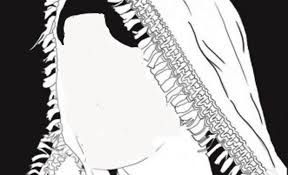The 'femme' Witnesses Of 1947
Jun 03, 2019 • 75 views
Horrors and Agony of the Women of Partition- A True Picture.
Partition or ‘batwaara’ as it is commonly known, came with a sense of horror, trauma, corrupt political systems, hedonistic religious rivalry, love and sacrifice. The masses of different religions were openly and fearlessly looted, injured, killed and women abducted and raped in public, thus presenting the grossness, ghastliness and total insanity yielded by the two-nation theory proposed by the British.
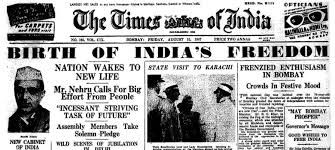
This tragic event of partition, the day India burned, not only ruined its people, but social relations, tainted the morality and humanity, burned the economies to ashes, planted deep the seed of corruption in the administration, and also resulted in the displacement of millions of people from their homes. This event which tainted many, also became a major source of literature and produced many award-winning artists and highly influential works.
This genre of writing, also known as partition literature, majorly reflects the impact of physical violence, mental torture and emotional torment that ate alive in fear, the hearts of millions of innocents. These simple, innocent and ignorant people, for whom freedom held not much importance and had a different meaning altogether, were crushed under the stone of baffles, chaos, confusion and thus, ended up becoming mere victims and nameless humans killed in this partition struggle.
A lot of writers like Khushwant Singh, Amrita Pritam, Rajesh Singh Bedi, Gulzar, Saadat Hasan Manto and much more, have contributed a lot to this particular era. Apart from the portrayal of the then existing societal patterns, such as deeply rooted patriarchy, rising conflicts between Hindus and Muslims, rapidly increasing poverty and the horrifying events that followed the partition struggle, books such as A train to Pakistan, Pinjar, Lajwanti, etc, has portrayed the women in these books as the one engaged in menial domestic chores, who are not expected to voice their views, someone who are less important, silent, submissive and simply co-existing.
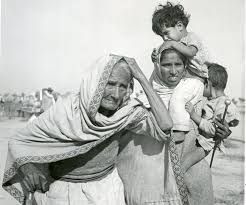
We cannot ignore the importance of womenfolk, in general, and their unvalued and unappreciated contribution to a society; as women form the very roots of one of the first and major forms of societal institution known to man- family and kinship. The patterns of institutions of family and social structures followed, is that of a dominating solid patriarchy, as still today, our Indian society is majorly known for its patriarchal norms. Women also carry the patriarchal principles either willingly or unwillingly. This behaviour of acceptance of male dominance seems to be instilled into Indian women by birth itself.
Any piece of literature, be it fiction or non-fiction, is a mirror to one’s society. It reflects, either in an honest and raw way the brutal side of the society, or in a sweet way, the side we want to see. If you want to know truly and deeply about any society, the best way is to look and skim deep through its literature. These works too, apart from reciting the horrors of 1947 and the years that followed, have very beautifully and truthfully reflected the lives of the common folk, their households- the citizens which form the very heart and core of any nation. A nation is not only known by the wars it won or the leaders that ruled, but its people.
The lives of these common women portrayed by the writers, is hauntingly true, a rather harsh reality we have always tried to either conceal or ignore. Considering the extent of the violence, what is truly dumbfounding is how little has been written about it. It is as if the women did not matter enough for people to even bear witness to the cruelty they suffered and suffer they did; Hindu, Muslim and Sikh women, they all suffered. The women of Manto, Pritam and Singh are the ones who are deemed as a property and are mostly illiterate and unaware - one of the many reasons of them being submissive, mute, obedient and dependent. These writers made such women important, broken and tainted, but still more human than the others. Thousands of women were raped, mutilated, branded with the names of their rapers and abductors, used as slaves and discarded as a waste.
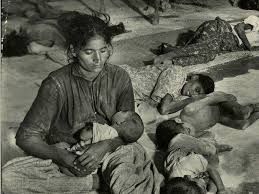
Reflecting the society in its truest forms, virginity is a used a noble symbol of propagating communal violence after partition and was also one of major reasons of endless “honour killings” and “pride suicides” by numerous women of that times. These writers have tried to unite both the communities (Hindus and Muslims) through these women- the only possible and rather an unfortunate way of bringing these communities together. Women are also seen as an object of deriving pleasure and satisfaction in exchange for materialistic things to keep them happy.
Women were discriminated against women on the basis of race, class, religion and occupation. The Muslim women in a lot of similar works are depicted as low, exploited and dependent. Whereas, the Hindu women are depicted as somewhat brave and pure. Does religion decide one’s parameters of cowardice or purity? What a shallow yet sad measuring bar.
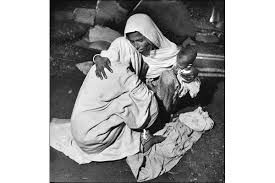
These works have portrayed many incidents that showed women being used to revenge men. Also, at the time of partition, when communal violence and massacres were at their heights, women were being degraded, abused and exploited to end- all in the name of religion and revenge.
‘Come!’ they yelled. ‘Come out, if you have the courage! Come out, if you want your mothers and sisters raped! Come out, brave men!’ (Singh, Khushwant, A Train to Pakistan. 2016:11)
‘They had heard of gentlewomen having their veils taken off, being stripped and marched down crowded streets to be raped in the marketplace.’ (Singh, Khushwant, A Train to Pakistan.2016:127-128)
The partition of India left the lives of women with their struggle, anger, loss, helplessness and hopelessness. These writers have very beautifully described the degree of patience and sacrifice of such women. It is also about hatred and affection, love and sorrow, loss and gain of women and how with continuously changing dynamics women had to constantly change and adapt themselves according to the situation, shedding and donning on multiple new identities. The girls themselves were made to feel polluted and impure which developed a sense of self-loathing and disgust amongst them. Many were raped and forced to bear the rape babies, “some stripped and paraded naked in the streets”, if they were lucky enough, they would escape and commit suicide. Such inhumane events and traumatic experiences also put a light on the psychology of these women as everything was against their will; it was as if they had lost complete control over their lives. The partition made these two communities, grave enemies within a night and the nation lost the very principles on which it stood- brotherhood and unity.
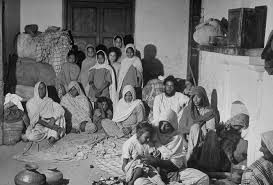
Similar themes of extreme levels of pure insanity and animalistic behaviour is also reflected through Manto’s works Thanda Gosht and Khol do which brings forth the unbelievable crimes done by these “men of religion” against women and how low one can go as far raping a dead body and devouring it like a beast or raping a girl to such extent, that she loses her sanity and upon hearing any man’s voice, goes blank and simply stands all naked; as if her life, her body has no purpose but is only a vessel, a dustbin to unload one’s waste? Such stories give a very realistic picture of one of the most prominent events which left a very strong impact on several generations. Partition did more harm than good to the people. All the power politics and religious fanaticism led to the destruction of thousands of lives and tainted them for eons. When their religion betrayed them, humanity was the only religion that still clung to these women, thus, very beautifully highlighting the deep human psyche during partition.
Such unfortunate stories of horror and bitter truth make us question our morals, our values as a human and the basic law of humanity as whatever is happening today with the endless innocent girls of this nation is no less than the horror which trapped the womankind in 1947 catastrophe. We might not be facing the turmoil of physical partition, but today, we are at a divide with our own selves, have parted ways with humanity, killing it slowly in a strong and a scuffling grip. The question still hangs thick in air, the beast that was unleashed many years ago, what have we done to tame it? Or has it even been tamed at all?
